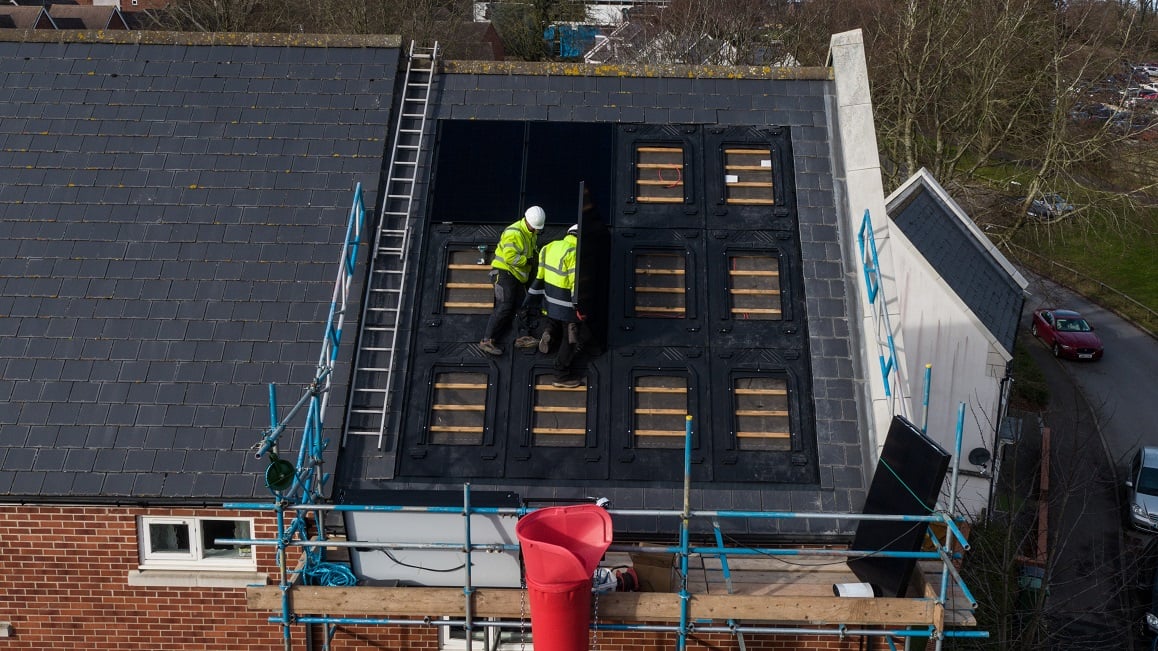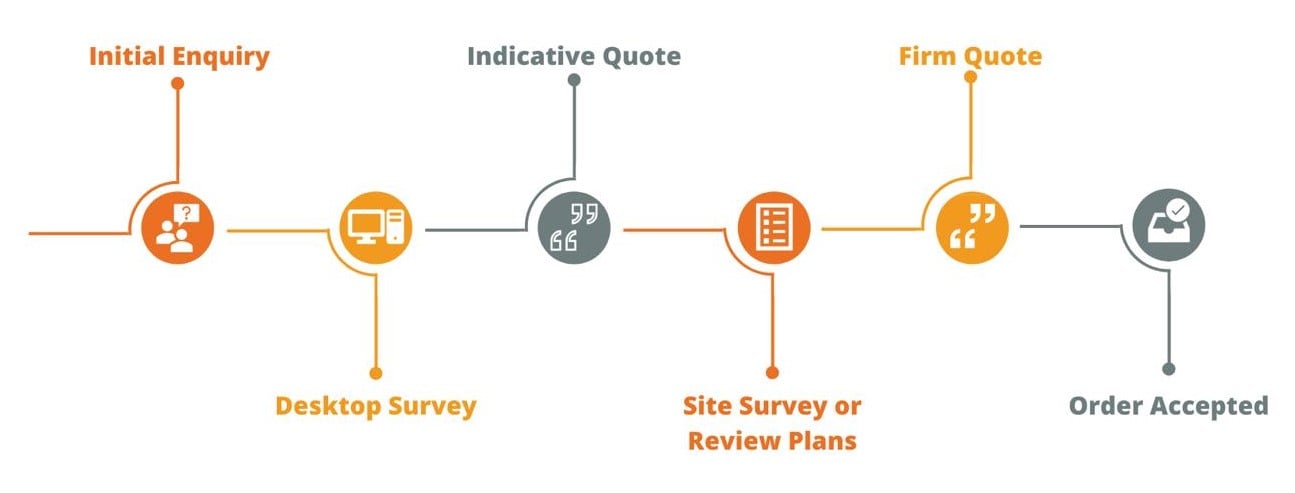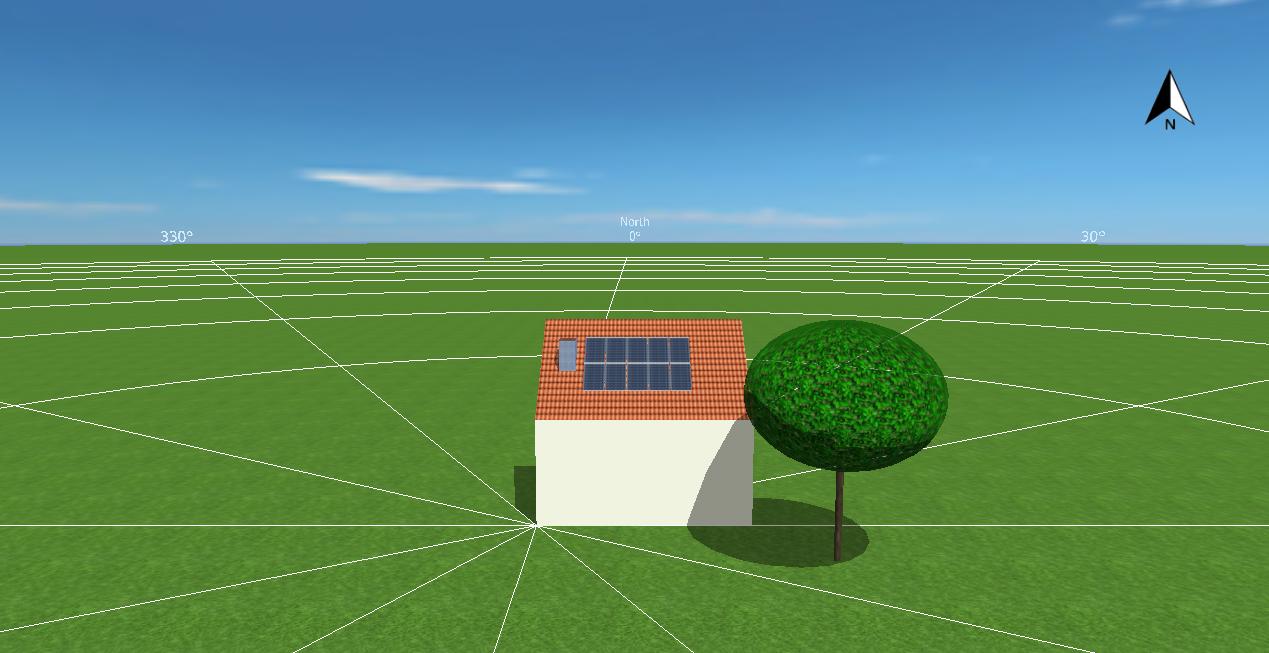
We’ve been installing solar PV since 2010 and sometimes forget how complex it can seem to newcomers. So we’ve put together this solar panel installation guide to help demystify the process and walk you through what’s involved with a variety of project types.
Here’s a brief rundown of how the process runs with Spirit:
The first step when you get in touch with us is to run a remote survey of your property, from which we can provide a quote and start designing the system.
One of our advisors then comes to site to answer any questions you may have, as well as taking measurements and inspections to finalise the quote.
Once the quote is accepted, one of our engineers then comes out to perform a technical and structural survey on site, which checks if everything is physically and electrically suitable for installation. Our head engineer will discuss the location of components and cable runs.
Providing there are no issues, domestic rooftop installations under 4kWp can proceed (the process from ordering to completion takes about 4-8 weeks). For commercial and larger domestic installations, we have to apply for prior DNO permission and/or planning permission if required (together this can take upwards of 5 months).
On installation day, a team of two or more installers (depending on the scale of the project) will be on site to fit the mounting system, attach the panels and connect up the electrics. The precise steps involved will obviously vary depending on whether it’s rooftop or ground mount, on-roof or integrated, the number of inverters, and if there is battery storage.
The installers run the final tests and commission the system.
Our office team later sends a handover pack with all the details and documents you need.

There are a few pre-install assessments that relate to solar PV:
Domestic rooftop solar installations are generally considered permitted development and don’t require planning permission. Exceptions:
Ground mounted solar PV, whether domestic or commercial, generally requires planning permission. Only very tiny installations can get away without it.
Commercial rooftop solar installations are also generally considered permitted development, so long as the system is under 50kW and panels are at least 1m from the edge of the building, and protrude from the surface less than 200mm (pitched roof or wall) or 1m (flat roof).
For more details, see our guide to solar planning permission.

When designing a solar PV system, there are a number of important factors to consider:
Obviously, solar panel installation costs vary based on the size of the system, location, complexity and equipment chosen. But as a ballpark figure, PV costs about £1,600-2,150 per kWp to install, making a standard 4kWp domestic system about £6,500 (inc. VAT).
For a full price breakdown and comparison of different types of system, see our installation cost article.
Your Spirit quote may not be the cheapest, but we believe it will be the best value. That’s because we specialise in high quality systems that will be with you for the long haul. As not all installers are made equal, there are some points we recommend looking out for when choosing which company you go with:
Are the installers MCS certified?
Do they provide a roof structural report?
Do they carry out shading analysis?
Which mounting systems do they use?
Do they use subcontractors?
Can they provide testimonials?
What kind of warranties do they offer?
Our website contains a host of information on installing solar panels and every stage of the process, from design to monitoring. You may also like to download our free guide to residential PV for a concise summary:
Copyright © Spirit Energy 2025 · info@spiritenergy.co.uk · 0118 951 4490
Jobs and Careers
Interested in joining the Spirit team? Email jobs@spiritenergy.co.uk
Spirit House, 25 Albury Close, Reading, RG30 1BD
(Location formerly known as 44 Portman Road, Reading, RG30 1EA)
Spirit Energy is the trading name of Spirit Solar Ltd · UK Company Number 07138647
Although care is taken to ensure that the information on our website (www.spiritenergy.co.uk) and any guides, calculators or checklists provided by us, electronically or otherwise, are accurate and up-to-date, we cannot accept any responsibility for mistakes or omissions. We enter into no express or implied conditions, warranties, terms or representations regarding the quality, accuracy or completeness of the information. We exclude to the extent lawfully permitted all liability for loss or damage, whether direct, indirect or consequential arising out of your use of our website or any guides, calculators or checklists provided by us, or from any information or omission contained in our website or any guides, calculators or checklists provided by us.